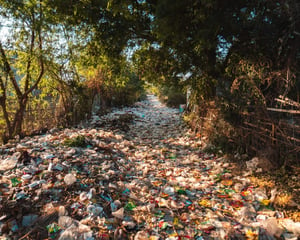SUSTAINABLE PACKAGING: MATERIAL SELECTION, CARBON REDUCTION, AND THE ROLE OF LEGISLATION IN FACILITATING A CIRCULAR ECONOMY
Nathan Wood, Dr Aaron Yeardley, Natalie Bavis and Dr Torill Bigg have written our latest white paper ‘Sustainable Packaging: Material Selection, Carbon Reduction, and the Role of Legislation in Facilitating a Circular Economy’. A shortened version has recently featured on the Sustainable Packaging News website, read it below.
.jpg?width=100&height=150&name=Tunley%20Headshots%20(17).jpg)
-1.jpg?width=100&height=150&name=Tunley%20Headshots%20(12)-1.jpg)
.jpg?width=100&height=150&name=Tunley%20Headshots%20(15).jpg)
-1.jpg?width=100&height=150&name=Tunley%20Headshots%20(13)-1.jpg)
EXCERPT
In the face of growing concerns surrounding climate change and resource scarcity, the demand for sustainable packaging solutions is at an all-time high. Sustainability can be defined as responsible use of resources today to preserve them for future generations, it is a complex challenge that requires balancing human needs and ecosystem preservation. Within the packaging industry, sustainable practices have gained traction in recent years, as material selection, carbon reduction, and circular economy policies take centre stage. Through effective collaboration between industries and well-designed legislation that drives desired behaviours, we can promote sustainable packaging and contribute to a more sustainable future.
In the context of packaging, environmental sustainability consists of three main pillars: Resource Planning, Carbon Reduction, and Waste Reduction. Resource planning strives to minimise waste by promoting a necessity mindset and conscientious material choices that facilitate reuse and efficient recycling. Carbon reduction initiatives are aimed at mitigating the impact of greenhouse gas emissions by addressing the entire carbon lifecycle of the packaging. This involves implementing measures such as enhancing energy efficiency and transitioning to renewable energy sources during the manufacturing process, as well as promoting changes in consumer behaviour. Waste reduction seeks to decrease waste volume by implementing strategies like waste prevention, reuse, recycling, and composting. To achieve this, material minimisation, easily recyclable or compostable designs and reusable packaging systems, can be employed. Alternative packaging materials, such as recycled paper, biodegradable polymers, and plant-based alternatives, can also help reduce the carbon footprint of packaging.




